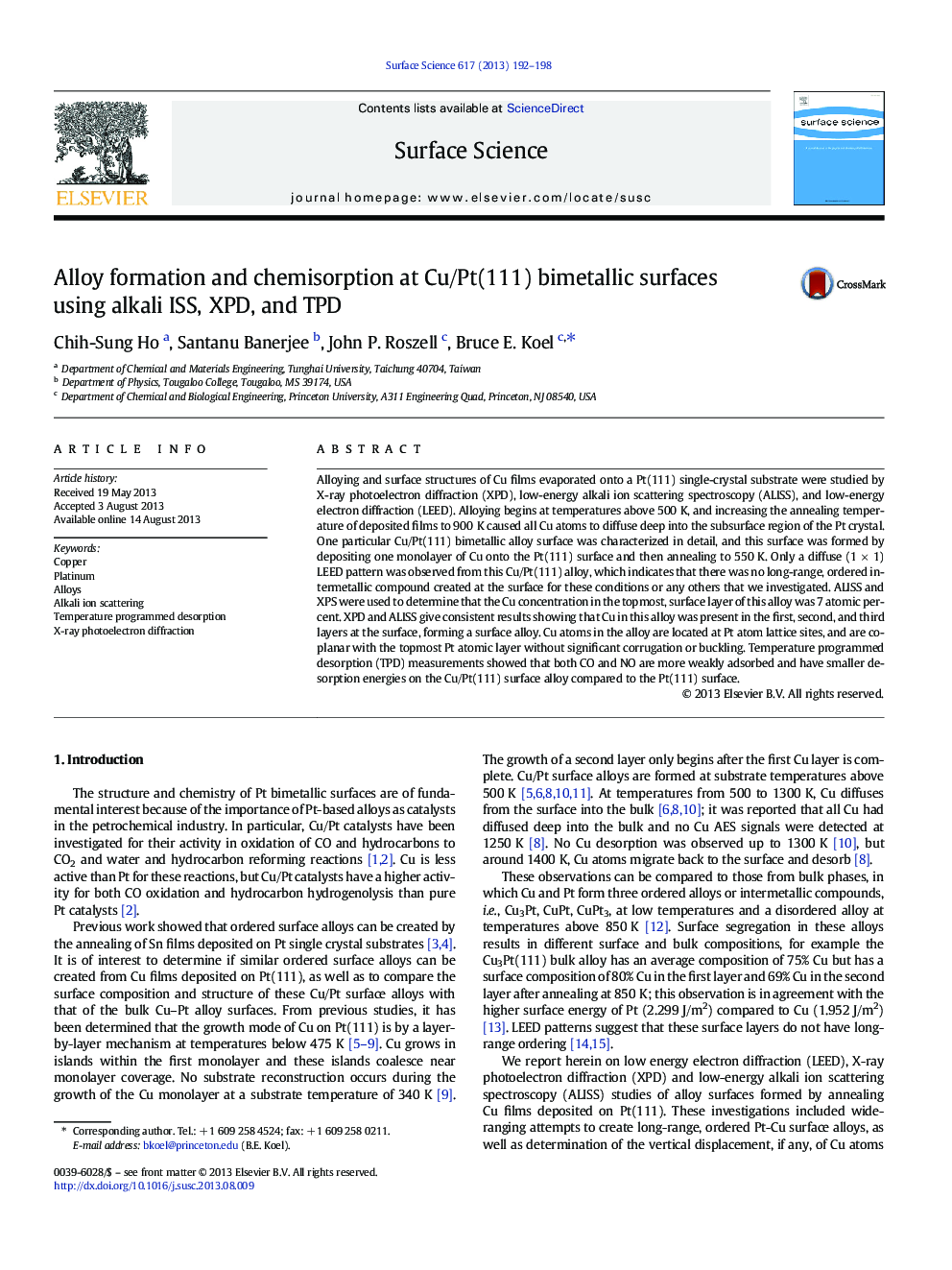| Article ID | Journal | Published Year | Pages | File Type |
|---|---|---|---|---|
| 5422384 | Surface Science | 2013 | 7 Pages |
â¢Cu/Pt surface created by vapor deposition of Cu on Pt(111) and annealing at 550 Kâ¢Cu substitutionally incorporated into Pt surface without vertical bucklingâ¢Reduction of CO and NO adsorption energy compared to pure Pt(111)â¢No long range order observed in surface alloy
Alloying and surface structures of Cu films evaporated onto a Pt(111) single-crystal substrate were studied by X-ray photoelectron diffraction (XPD), low-energy alkali ion scattering spectroscopy (ALISS), and low-energy electron diffraction (LEED). Alloying begins at temperatures above 500Â K, and increasing the annealing temperature of deposited films to 900Â K caused all Cu atoms to diffuse deep into the subsurface region of the Pt crystal. One particular Cu/Pt(111) bimetallic alloy surface was characterized in detail, and this surface was formed by depositing one monolayer of Cu onto the Pt(111) surface and then annealing to 550Â K. Only a diffuse (1Â ÃÂ 1) LEED pattern was observed from this Cu/Pt(111) alloy, which indicates that there was no long-range, ordered intermetallic compound created at the surface for these conditions or any others that we investigated. ALISS and XPS were used to determine that the Cu concentration in the topmost, surface layer of this alloy was 7 atomic percent. XPD and ALISS give consistent results showing that Cu in this alloy was present in the first, second, and third layers at the surface, forming a surface alloy. Cu atoms in the alloy are located at Pt atom lattice sites, and are coplanar with the topmost Pt atomic layer without significant corrugation or buckling. Temperature programmed desorption (TPD) measurements showed that both CO and NO are more weakly adsorbed and have smaller desorption energies on the Cu/Pt(111) surface alloy compared to the Pt(111) surface.
